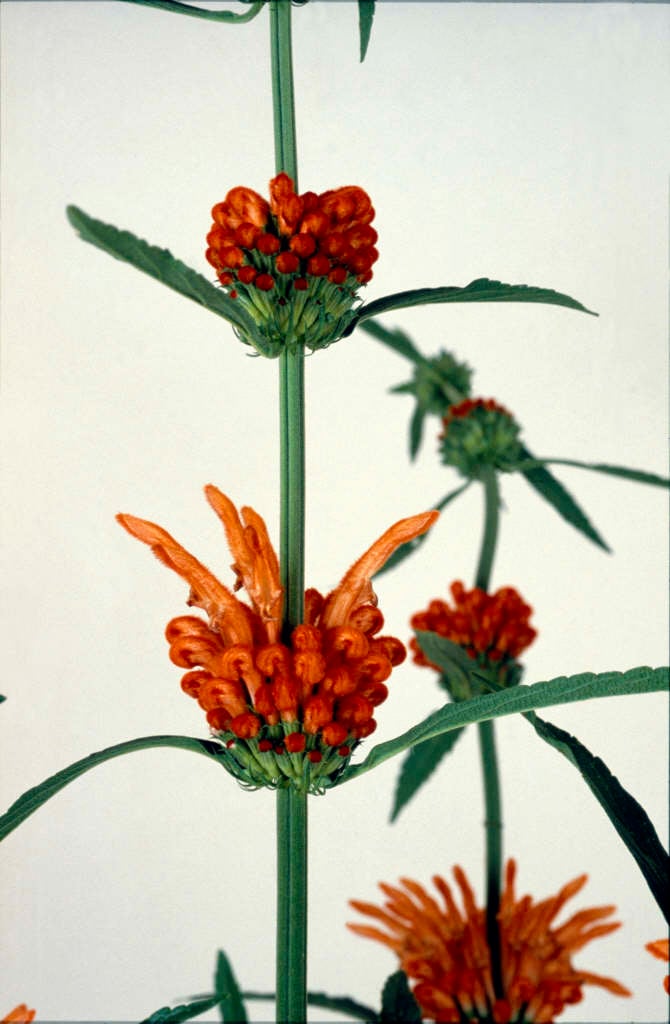Size
Ultimate height
1.5–2.5 metresTime to ultimate height
2–5 yearsUltimate spread
1–1.5 metresGrowing conditions
Moisture
Well–drainedpH
Alkaline, NeutralColour & scent
| Stem | Flower | Foliage | Fruit | |
| Spring | Green | |||
|---|---|---|---|---|
| Summer | Green | |||
| Autumn | Orange Red | Green | ||
| Winter | Orange Red | Green |
Position
- Full sun
Aspect
South–facing or West–facing
Exposure
Sheltered Hardiness
H2Botanical details
- Family
- Lamiaceae
- Native to GB / Ireland
- No
- Foliage
- Semi evergreen
- Habit
- Bushy
- Genus
Leonotis can be annuals, perennials, deciduous or evergreen shrubs, with aromatic leaves and 2-lipped, tubular flowers borne in whorls towards the ends of the branches
- Name status
Correct
- Plant range
- South Africa
How to grow
Cultivation
Treat as a tender perennial and grow in a cool greenhouse, or plant outdoors after frosts in a sunny border or against a warm wall
Propagation
Propagate by seed or greenwood cuttings in late spring or summer
Suggested planting locations and garden types
- Coastal
- Cottage and informal garden
- Patio and container plants
- Wall side borders
Pruning
Pruning group 10, in spring, if grown perennially outdoors. If grown under glass, or as a tender perennial, cut to ground level in early spring
Pests
Under glass glasshouse red spider mite and glasshouse whitefly may be a problem
Diseases
Susceptible to grey moulds under glass
Love gardening
Sign up to receive regular gardening tips, inspiration, offers and more
View our Privacy Policy
Get involved
The Royal Horticultural Society is the UK’s leading gardening charity. We aim to enrich everyone’s life through plants, and make the UK a greener and more beautiful place.
